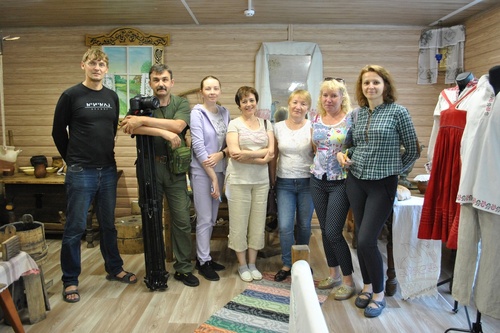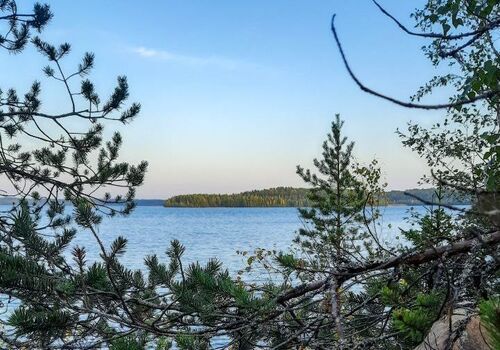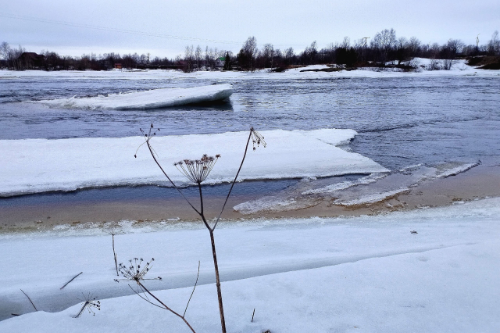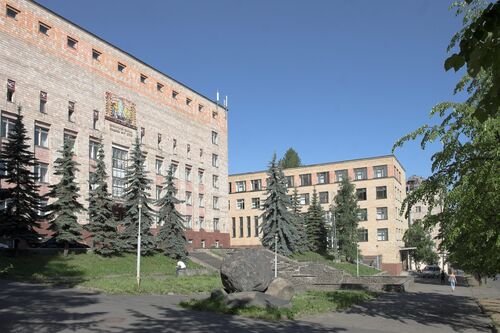In the second half of July, researchers from the Institute of Linguistics, Literature and History (ILLH) KarRC RAS undertook an expedition to the Tver Region. The scientists surveyed settlements in the Likhoslavl and Lesnoy Municipal Districts, as well as the Maksatikhinsky Municipal District. The purpose of the trip was to add content to the audio map on the VepKar language corpus platform, created by scientists from ILLH and the Institute of Applied Mathematical Research (IAMR) KarRC RAS. Anyone can use this resource as a full-fledged electronic dictionary, find their own settlement and listen to the dialect spoken by their ancestors.
The field team visited 11 villages and interviewed more than 50 informants, among them descendants of the Karelians whom researchers from Petrozavodsk had recorded back in the 1950s.
— These speech samples have already been uploaded to the VepKar speech corpus platform. However, Tver Karelia was only partially covered on the audio map. To supplement this database, we participated in an expedition competition of the Russian Geographical Society. The project “Filling the audio map of Karelian and Veps dialects” was supported by a grant. During the trip we recorded over 30 hours of Karelian speech samples on audio. In addition, we collected rich toponymic, folklore and ethnographic material, — told Irina Novak, Director ILLH KarRC RAS.
The scientists visited the Karelian farmstead in the village of Tolmachi, the school museum in the village of Lesnoye, the library in Gnezdov, and the House of Karelian Culture in the village of Stan, which is a member of the Association of the Most Beautiful Villages and Towns of Russia. Field team members interacted closely with local activists and discussed opportunities for further cooperation.
— We heard remarkable Karelian language in the Likhoslavl Districts and Maksatikhinsky District. We met informants who have a good command of the language, actively speak it among themselves, and easily switch from one language to another. The speakers have no language barrier, they did not need time to pick up words. In the village of Stan we were treated to a wonderful museum - the House of Karelian Culture. It struck us to the heart. The museum covers all aspects of people's life: lifestyle, culture, language. The situation in Lesnoy District is different, similar to what we find in some districts of Karelia. People who know Karelian understand the language, but answer in Russian. They no longer speak Karelian within their families, — shared Svetlana Nagurnaya, Head of Linguistics Section ILLH KarRC RAS.
There will be two more trips within this RGS project. In summer, scientists will travel to Prionezhye to collect samples of the Veps language. In the fall, researchers will interview descendants of Livvi and Ludic Karelians in central Karelia.
— During our trip to the Tver Region, we compiled a manual on collecting linguistic material. This technique is an important output of our scientific work, as the experience of compiling an audio map can be disseminated to other regions of the Russian Federation, — Irina Novak summed up.
On their visit to Tver Karelians scientists were joined by journalists from Vesti-Karelia program on Russia-1 TV channel, who are preparing a whole series of stories based on the results of the field trips.
News

July 4, 2024
VepKar audio map supplemented with Tver Karelian speech samples
Researchers from the Institute of Linguistics, Literature and History (ILLH) KarRC RAS are back from expedition to the Tver Region. The scientists recorded over 30 hours of Karelian speech samples and interviewed more than 50 informants. The trip was organized within the project “Filling the audio map of Karelian and Veps dialects”, supported by the Russian Geographical Society. Together with the scientists, Tver Karelians were visited by journalists from the Vesti-Karelia program of the Rossiya-1 TV channel.
Researchers from the Institute of Linguistics, Literature and History (ILLH) KarRC RAS are back from expedition to the Tver Region. The scientists recorded over 30 hours of Karelian speech samples and interviewed more than 50 informants. The trip was organized within the project “Filling the audio map of Karelian and Veps dialects”, supported by the Russian Geographical Society. Together with the scientists, Tver Karelians were visited by journalists from the Vesti-Karelia program of the Rossiya-1 TV channel.
See also:

July 7, 2025
A successful introduction: the zander has settled down in Lake Sundozero and continues to spread
Scientists of the Institute of Biology KarRC RAS have published the results of long-term observations over the population of the zander (or pikeperch) introduced to Lake Sundozero more than a half-century ago. They confirm the species has become naturalized. Maintaining the population requires regulation of harvesting, protection during spawning, and tending of spawning grounds.
Scientists of the Institute of Biology KarRC RAS have published the results of long-term observations over the population of the zander (or pikeperch) introduced to Lake Sundozero more than a half-century ago. They confirm the species has become naturalized. Maintaining the population requires regulation of harvesting, protection during spawning, and tending of spawning grounds.

June 26, 2025
Ice-related phenomena on rivers emptying into the White Sea now last three weeks less than 60 years before
Ice on northern rivers now forms later while ice-off occurs earlier. Karelian scientists confirmed this having analyzed 64 years of marine and meteorological data from the estuaries of rivers draining into the White Sea along its western coast. Climate change has bit three weeks off the ice-covered period on these rivers. The reductions have been the most significant in the last 30 years, aligning with global warming trends in Arctic water bodies.
Ice on northern rivers now forms later while ice-off occurs earlier. Karelian scientists confirmed this having analyzed 64 years of marine and meteorological data from the estuaries of rivers draining into the White Sea along its western coast. Climate change has bit three weeks off the ice-covered period on these rivers. The reductions have been the most significant in the last 30 years, aligning with global warming trends in Arctic water bodies.

June 23, 2025
Citizen science and web technologies help researchers study insects of Karelia
More than 30 insect species not encountered in Karelia previously have been revealed by entomologists from KarRC RAS during their expeditions and using data communicated by active participants of the iNaturalist portal – an open platform for collecting biodiversity data.
More than 30 insect species not encountered in Karelia previously have been revealed by entomologists from KarRC RAS during their expeditions and using data communicated by active participants of the iNaturalist portal – an open platform for collecting biodiversity data.

June 20, 2025
Application process for 2025/2026 Doctoral Studies started at KarRC RAS
On June 20, Karelian Research Centre RAS began accepting papers from applicants for its Doctoral Courses. This year, university graduates can choose from ten academic specialties in the STEM, natural sciences, humanities, and social sciences.
On June 20, Karelian Research Centre RAS began accepting papers from applicants for its Doctoral Courses. This year, university graduates can choose from ten academic specialties in the STEM, natural sciences, humanities, and social sciences.



